Out of Money, One
During the American Revolution,
emblems on paper money often symbolized unity.
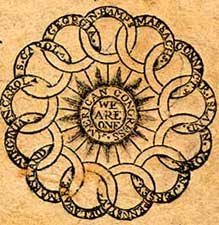
On Continental Currency (fractional notes*), the emblem designed by Benjamin Franklin had a circle of 13 interlocking rings surrounding the motto, "WE ARE ONE."
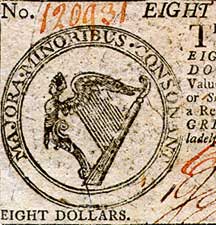
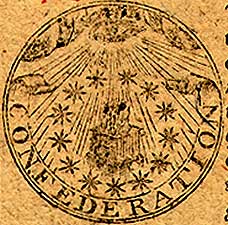
The emblem on the Continental Currency $8 note (1776) was a harp with 13 strings. The accompanying motto meant: "The larger are in harmony with the smaller."
On the Continental Currency $40 note (1778) was an eye surrounded by 13 stars and the motto "CONFEDERATION." It was designed by Francis Hopkinson, the consultant on the second Great Seal committee (1780).
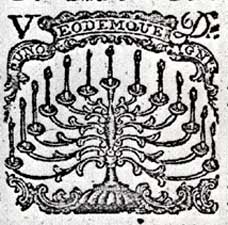
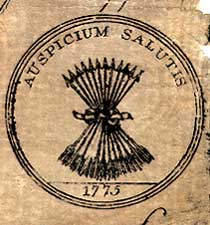
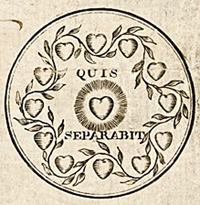
- The New York $5 note (1776) had a candelabrum of 13 candles. Its motto meant: "One fire, and to the same purpose."
- South Carolina's £5 note (1775) had a bundle of twelve arrows tied with a ribbon. Its motto meant: "An auspice of well-being."
- South Carolina's £100 note (1776) had 13 hearts. Its motto meant: "Who will separate us?"
*The fractional notes (less than a dollar) designed by Benjamin Franklin in 1776 also had the "Fugio" emblem with a sun and sundial. The symbolism means: Time flies, so Mind Your Business.
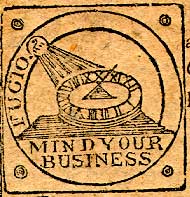
The Continental Congress, Continental Army, and Continental Currency were all unifying factors that helped the transition of 13 states into one nation. Paper money, however, was not as well appreciated, thanks in part to British efforts at undermining public confidence in it (including counterfeiting). "Not worth a Continental" became a saying.
Colonial currency also had symbols of peace.
References:
- Early Paper Money of America: An Illustrated, Historical, and Descriptive Compilation... This fascinating book by Eric P. Newman tells how the Declaration of Independence makes specific accusations against the King of England for his unnatural restrictions on paper money, a major cause of the American Revolution.
- Colonial Currency, a project of the Robert H. Gore, Jr. Numismatic Endowment a the University of Notre Dame has wonderful examples of America's revolutionary paper money.
|

